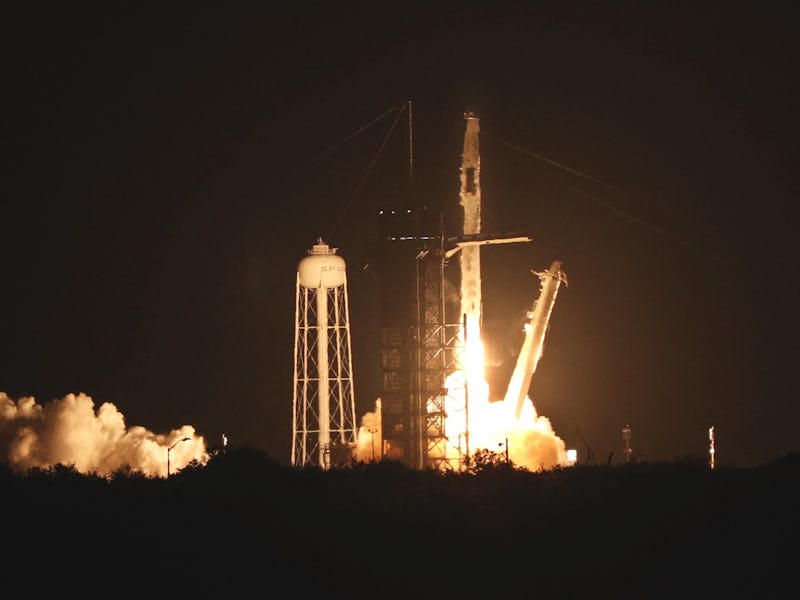Impressive Falcon 9 milestone proves SpaceX’s future is bright
SpaceX has reached an incredible milestone with its Falcon 9 rocket. The success bodes well for its future goals and missions.

Liftoff! SpaceX set an incredible milestone with its Falcon 9 rocket over the weekend after it successfully flew a booster for the 10th time.
On May 9 at 2:42 a.m. Eastern time, the Falcon 9 launched from Space Launch Complex 40 at Cape Canaveral Space Force Station in Florida. The mission launched the 28th batch of Starlink satellites, used for SpaceX’s under-development internet service that promises high speeds and low latencies regardless of local infrastructure.
Although SpaceX’s Starlink missions have become routine, this one was anything but. The mission marked the first time the firm had successfully re-used a booster for the 10th time. Re-using the rocket is a key element of SpaceX’s goal to reduce the costs of spaceflight, but it also enables some of the firm’s more ambitious plans like more frequent flights and crewed missions to Mars.
Want to know more about SpaceX’s plans to reuse rockets? Subscribe to MUSK READS+ for exclusive interviews and analysis about all things Musk.
Following the latest launch, the booster successfully landed on the Just Read the Instructions drone ship.
This was the 10th flight for this booster. It previously flew on:
- The Demo-1 uncrewed Crew Dragon flight. This mission, on March 2, 2019, sent the capsule to the International Space Station as part of its development program.
- The RADARSAT constellation mission on June 19, 2019.
- The SXM-7 satellite mission on December 13, 2020.
- Six previous Starlink missions: the fourth batch on January 29, 2020, seventh batch on April 22, 2020, 10th batch on August 7, 2020, 14th batch on October 18, 2020, 17th batch on January 20, 2021, and 23rd batch on March 14, 2021.
Watch SpaceX’s video commemorating the rocket:
There is debate over how many times a rocket needs to fly before the costs of reusing rockets make economic sense. A reusable rocket requires a design that can support this feature and needs enough fuel to slow itself down during the return journey.
In April 2020, United Launch Alliance CEO Tory Bruno claimed that “our estimate remains around 10 flights as a fleet average to achieve a consistent breakeven point.”
In response, SpaceX CEO Elon Musk argued that a spaceflight firm will pull ahead after just three reuses:
“Payload reduction due to reusability of booster & fairing is <40% for F9 & recovery & refurb is <10%, so you’re roughly even with 2 flights, definitely ahead with 3”
But as for how many times SpaceX could re-use the same rocket, Musk suggested there’s still much further to go:
“I don’t want be cavalier, but there isn’t an obvious limit. 100+ flights are possible. Some parts will need to be replaced or upgraded. Cleaning all 9 Merlin turbines is difficult.”
The Inverse analysis — The milestone is impressive, and it could be the end of the road for the Falcon rocket. Musk claimed on Twitter that the firm would only “push for 10 flights.”
But SpaceX will need to go further if it wants to achieve some of its more ambitious goals. Musk aims to build a city on Mars by 2050, using the under-development Starship to send crew and cargo.
In November 2019, Musk claimed that the Starship is designed to launch three times per day, so one vehicle can complete 1,000 launches per year. With around 100 Starships, that would represent 10 million tons to orbit per year.
SpaceX’s milestone is impressive within the world of spaceflight, as others like Rocket Lab work to develop their own reuse systems. But if Musk wants to meet his own lofty goals, SpaceX is going to have to soar way past that.
SUBSCRIBE TO MUSK READS+, A PREMIUM NEWSLETTER THAT COVERS THE WORLDS OF ELON MUSK, SPACEX, TESLA, AND EVERYTHING BETWEEN.